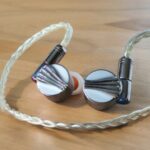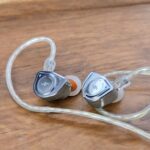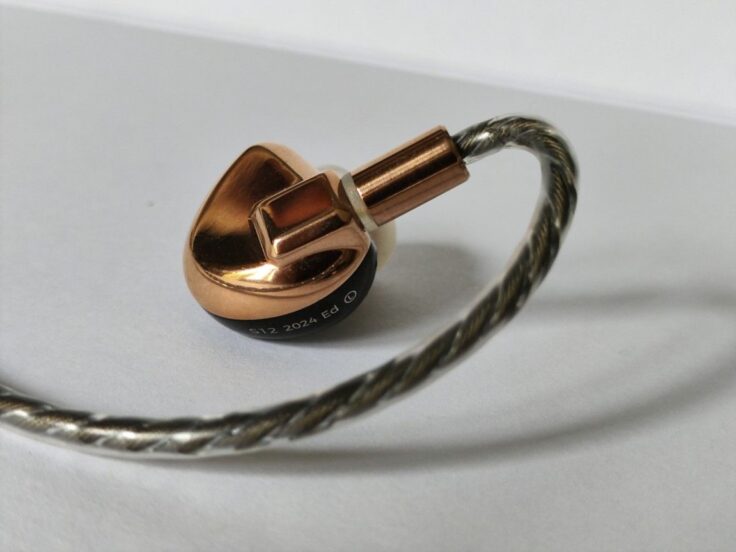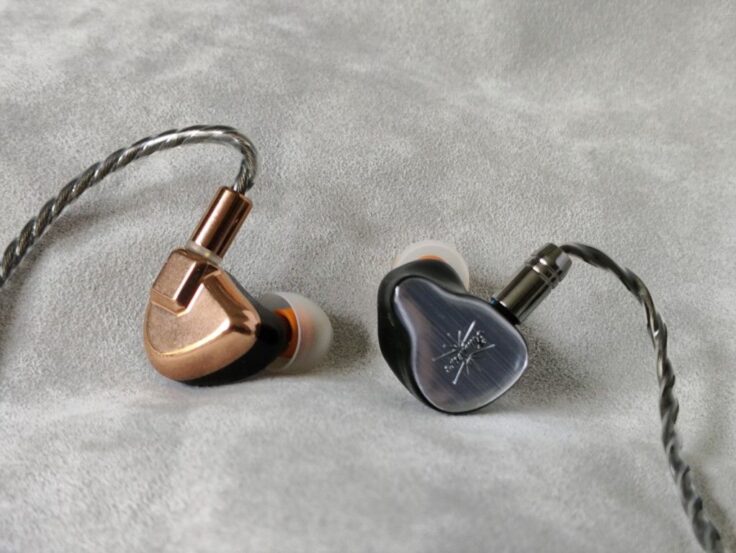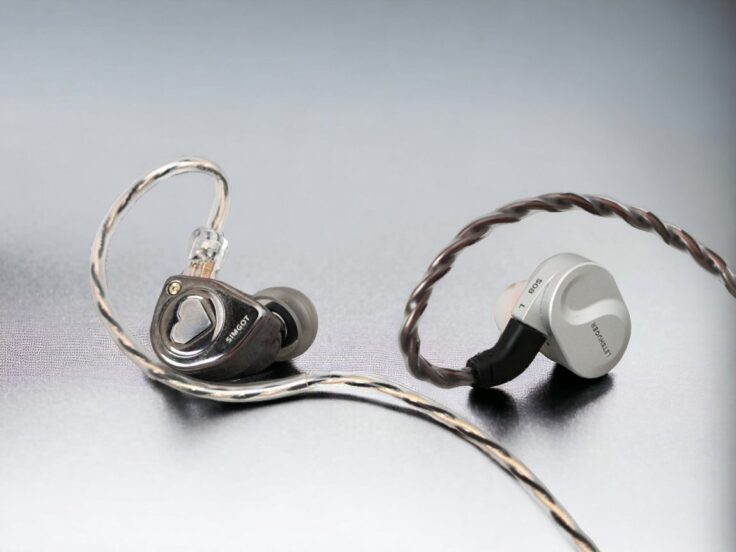Letshuoer x Gizaudio Galileo is a dual-driver earphone with a meticulously designed resin housing and innovative resonance handling. It features a clean and well-balanced natural sound with an impressive level of detail.
Galileo features a 10 mm dynamic driver along with a balanced armature driver. The dynamic driver features a liquid silicone and aluminum-magnesium alloy diaphragm. The balanced armature is a Danish Sonion 2389. These are accompanied by an independent electronic frequency division.
The cavity is carefully designed for each driver, and the Galileo features a high-precision 3D-printed acoustic cavity structure. The complex cavity is molded simultaneously with resin materials in order to best accommodate the two drivers and the sound they deliver. The cavity and acoustic damping structure in the Galileo aim to minimize unwanted resonance and standing waves, leading to a smooth and controlled high-frequency response, enhancing the natural tonality and detail richness.
Galileo’s oxygen-free copper silver-plated wire comes with optional 3.5mm/4.4mm all-metal connectors and standard 0.78 mm earphone interfaces, thus accommodating third-party upgrade cables.

LETSHUOER x GIZAUDIO GALILEO SPECIFICATIONW
- Two Drivers: one 10 mm dynamic driver, one balanced armature driver
- Impedance: 14Ω
- Sensitivity: 104 dB
- Frequency Response: 20Hz – 20KHz
- Cable Length: 1.2 m
- Pin Type: 2-pin Connector (0.78mm)
- Plug Type: 3.5mm
Price when reviewed: 109 USD on sale, 140 USD MSRP.
- Price on Amazon: Letshuoer x Gizaudio Galileo
- Price on Linsoul: Letshuoer x Gizaudio Galileo
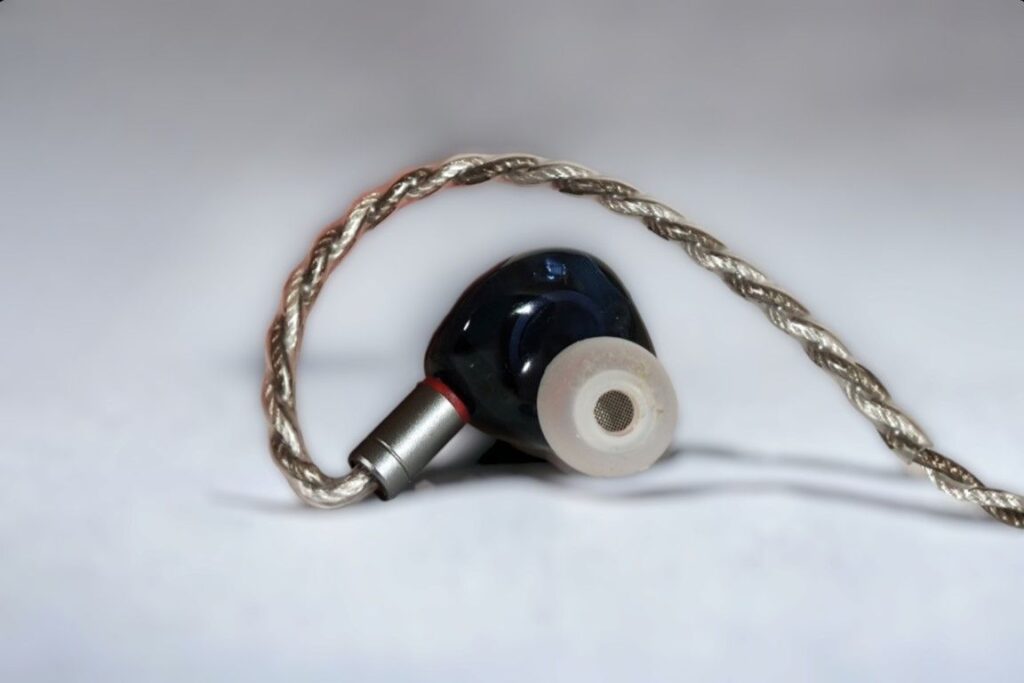
LISTENING IMPRESSIONS
Associated equipment: Topping A90 amplifier with the RME ADI-2 DAC FS as a source. The RME sounds excellent by itself, but it’s more practical for me to use the Topping.
Two by Arild Andersen Group
It sounds very organic and alive. The bass and percussion, the piano and saxophone—they all play together in a very nice and balanced way. The midrange really shines. The soundstage and imaging are good, but not supernaturally so. It just sounds very natural, organic, and dynamic.
Khmer by Nils Petter Molvær
The bass of this track can be a bit challenging and difficult to handle. The Galileo does a good job with a well-behaved and controlled bass performance. The trumpet is brought nicely forward in the mix, and I think the imaging and separation are very good; there is a great sense of depth to the soundstage.
Night Train to You by Marcin Wasilewski Trio
Again, a very nice performance from the Galileo. Every instrument has a very natural timbre. Detail retrieval is excellent across the frequency spectrum, and everything is nicely balanced.
The Other Side by Tord Gustavsen
Once more, the Galileo impresses with its tonality and timbre. Further, its ability to separate instruments while at the same time giving them fullness and body is impressive. The highly resolving nature of the treble becomes very apparent with the percussion in this piece. The bass is of good quality but not very strong; tthe focus is on the mids and treble.
Jambi by Tool
The Galileo doesn’t have the bass boost to make this track as massive as it can be, but the vocals really stand out nicely. This track really sounds its best with a bass shelf, however, the Galileo is very balanced and full of texture and detail, and the treble is not sibilant with the vocals, as some others can be. It’s very enjoyable, but neutral and organic rather than bassy and massive.
Smile by Pearl Jam
This sounds crisp and clear, with great instrument separation and layering. The midrange is very upfront, giving the vocals the attention they deserve. The bass is good, and the treble is detailed and articulate without sibilance.
Escape Route by Boris Blank
A wonderful presentation from Galileo. The bass is not thunderous but definitely plentiful. The trumpet is clear and cuts through the mix. Detail, layering, and imaging are excellent.
Never Enough by Loren Allred
It is a beautiful song, but I don’t know what they do to the recordings in the production process to make it sound mediocre. It sounds like they’ve put it through a machine to add a dose of digital glare. Anyway, the Galileo is quite revealing and has plenty of detail, and I find it well balanced but revealing. The upper midrange is annoying, but not because the Galileo does anything wrong. This recording just reveals how revealing Galileo is.
As Before by Olga Konkova
The cajôn drum kicks decently hard, but it’s not overly powerful. The vocals are delicious, and no digital glare is present—just a pure human voice. It sounds very natural. I am especially impressed with the sense of depth. You can hear the reverb from the instruments and vocals, this is far from obvious with all IEMs.
COMPARISONS
KIWI EARS QUARTET vs. GALILEO
The Quartet is a 4-driver design with two tuning switches, bass boost and treble boost on/off (1/0). The stock tuning is with both switches activated and set to on (1-1)

Starting out with the Quartet with both switches turned off, it is clear that even though the Galileo has very good bass quality, the Quartet with no bass boost (0-0 configuration) still has more quantity. The mid-range on the Galileo is more up front, with more energy in the upper mids. The Quartet is smoother and more mellow-sounding. The Galileo has better separation and imaging, but the soundstage is equally large on both. The Galileo generally sounds clearer and cleaner with more detail.
Setting the Quartet in “stock” 1-1 mode unsurprisingly gives it more bass and treble. It feels clearer and has better imaging than with both switches turned off. It sounds more lively. The upper midrange is still less pronounced than the Galileo’s, but in the 1-1 setting, the Quartet definitely has something to offer. It’s smooth and velvet-like, and the bass is truly something special. The Galileo is still more neutral, with finer detail and better imaging.
Read my full comparison here.
You can check out the Kiwi Ears Quartet here:
- Linsoul: Kiwi Ears Quartet
- Amazon: Kiwi Ears Quartet

LETSHUOER S12 PRO vs. GALILEO
While the Galileo is a somewhat midrange-centric, neutral-sounding IEM, the S12 PRO has significantly more mid-bass, which can often be very enjoyable, depending on the track.
Starting with the higher frequencies, I find the Galileo to have a very clean, well-balanced treble, while the S12 PRO is crisper and rawer. It gives the music a bit more bite and edge. This can be a good thing, but it can also become sibilant, something I’ve never experienced with the Galileo. However, I must add that I don’t find the S12 PRO generally to be too bright or fatiguing, but it’s not as smooth as the Galileo.
In the midrange, the S12 PRO is a bit more mellow-sounding. It has relatively more energy in the lower mids than in the higher. Together with the crisper treble and some extra mid-bass, it gives a dry warmth to the midrange, which is often very seductive. In direct comparison to the Galileo, however, I find the latter to generally have a more organic sounding midrange.
When it comes to the BASS, the S12 PRO is undoubtedly the king. It has a very satisfying bass performance. Like a true planar magnetic earphone, it is tight and deep. It also has that extra presence in the mid-bass, which makes it warm and delicious without dominating everything.
They both have a good, wide, and open soundstage, but I find that the Galileo has better depth and slightly more precise imaging and layering.
With regards to detail and general dynamics, I find that the Galileo has the upper hand in the midrange and treble area, while the S12 PRO rules in the bass.
The Galileo and the S12 PRO are two different flavours, and excel at different things. I like them both a lot.
Read my full comparison here.
You can check out the S12 PRO here:
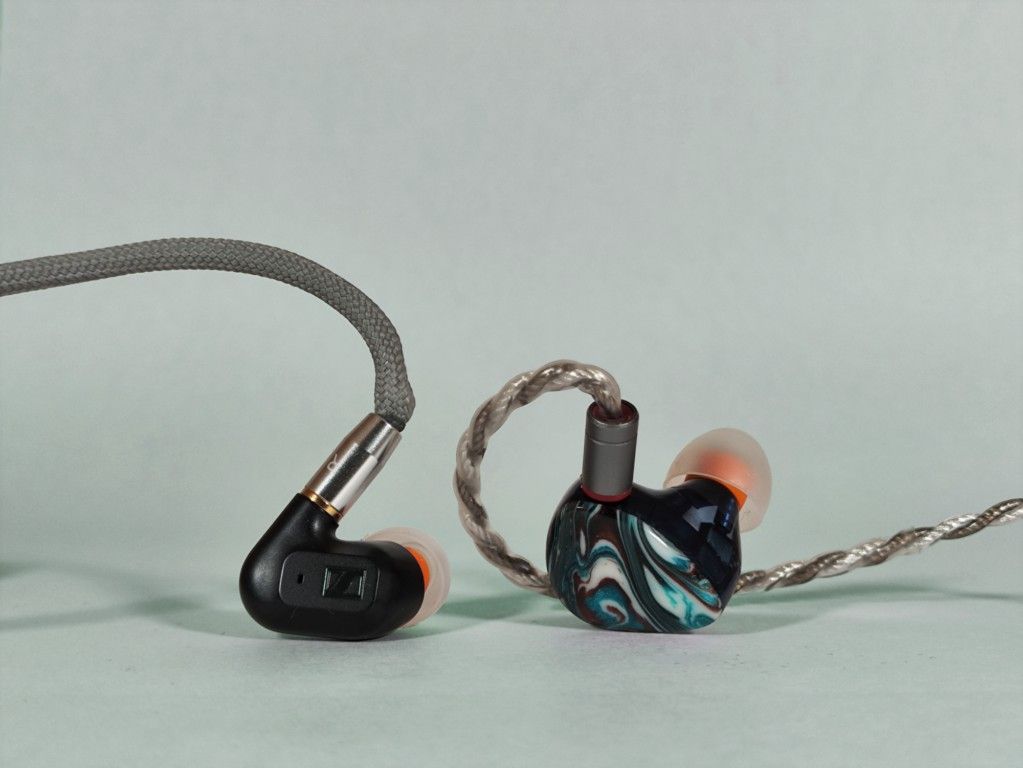
SENNHEISER IE200 vs. GALILEO
The IE200 uses a relatively small single dynamic driver of only 7 mm. It still gets the job done. The housing is very small, and the driver is identical to the driver in the similar looking but much more expensive IE600 and IE900. The differences between them lie in the acoustic properties of the housing.
Compared to the Galileo, the IE200 has a similar amount of treble-energy, but I find the IE200 to be more peaky. The midrange is much more different between them. The IE200 is quite mellow, while the Galileo has more energy in the upper mids, giving it a more up front and, in this case, a more neutral tonality. The IE200 has significantly more bass, which combined with the midrange differences makes the IE200 sound darker, lusher, and warmer.
The soundstage is quite similar, but imaging, layering, and sense of depth are better with the Galileo. Microdynamics are also better with the Galileo, especially in the midrange and bass.
At first listen, the IE200 comes off as stronger in macro-dynamics. However, after some more critical listening, I conclude that the Galileo offers at least the same amount of dynamic contrast; it just lacks the elevated bass if the IE200.
Even though I mostly prefer the Galileo for its more neutral and nuanced delivery, there certainly is a place for the more V-shaped and mellow tuning of the IE200.
Read my full comparison here.
Buy on Amazon: Sennheiser IE200
LETSHUOER CADENZA 4 vs. GALILEO
The Cadenza 4 is Letshuoer’s newest IEM, it has four drivers: one 10 mm dynamic driver (DD) and three balanced armatures (BA). That’s not dissimilar to the Galileo, which has a 10 mm DD but only one BA. Now that the Galileo is no longer produced, it is interesting to see how they compare.
I am very tempted to say that the Cadenza 4 is a Galileo with more bass. There certainly is some truth to that, but it’s not a completely accurate description.
Both have a very nice, clean treble that sounds organic and manages to be crisp and clear without ever becoming too bright or sibilant.
The thing I’m most enthusiastic about is how they put the midrange in the center of attention and deliver fabulous-sounding vocals, strings, and other instruments. I absolutely adore the high midrange presence of the Galileo; it is the opposite of the typical overcrowded market of V-shaped-frequency response curved IEM.
Where the S12 and the Galileo clearly diverge is in the bass. The Galileo is bass-light. Mostly, I find it to be very enjoyable also because it has a polite bass presence, and the quality is usually more than acceptable. However, sometimes I definitely would like some more bass quantity, and with certain tracks, the quality suffers in the sub-bass region. That is never an issue with the Cadenza 4, which has excellent bass performance and always enough presence.
You can check out the Cadenza 4 here:
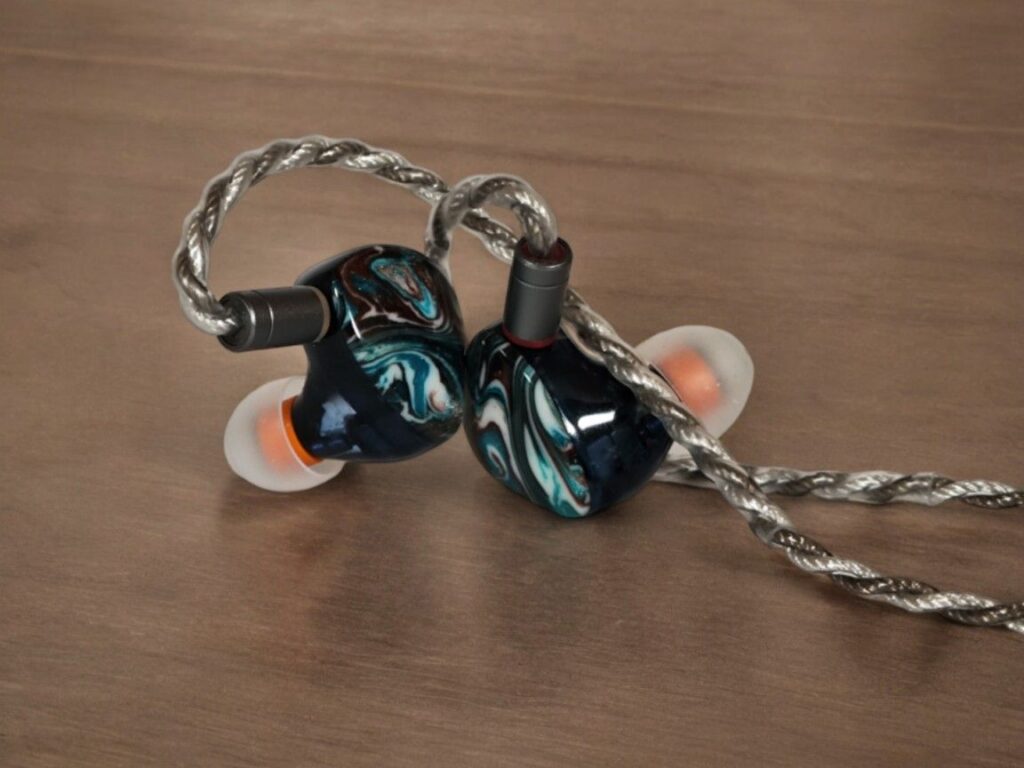
AMPLIFICATION
I have done my listening mostly with the Topping A90 amplifier, which of course has more than enough power to drive any normal in-ear monitor, not only to the correct volume but also with the authority and enough control to give them the best.
When it comes to portable options, my POCO F5 phone’s headphone output, the Galileo, sounds quite respectable with power to spare. The good old USB mini DAC/Amps Dragonfly Red and Dragonfly Cobalt both work well, as do the THX Onyx USB-dongle and the xDuoo Link2 Bal mini USB amp.
The difference between the dongles and the desktop rig is not very big. In comparison, e.g. the S12 PRO and IE200 scale more. In conclusion, the Galileo is quite easy on the amplifier.
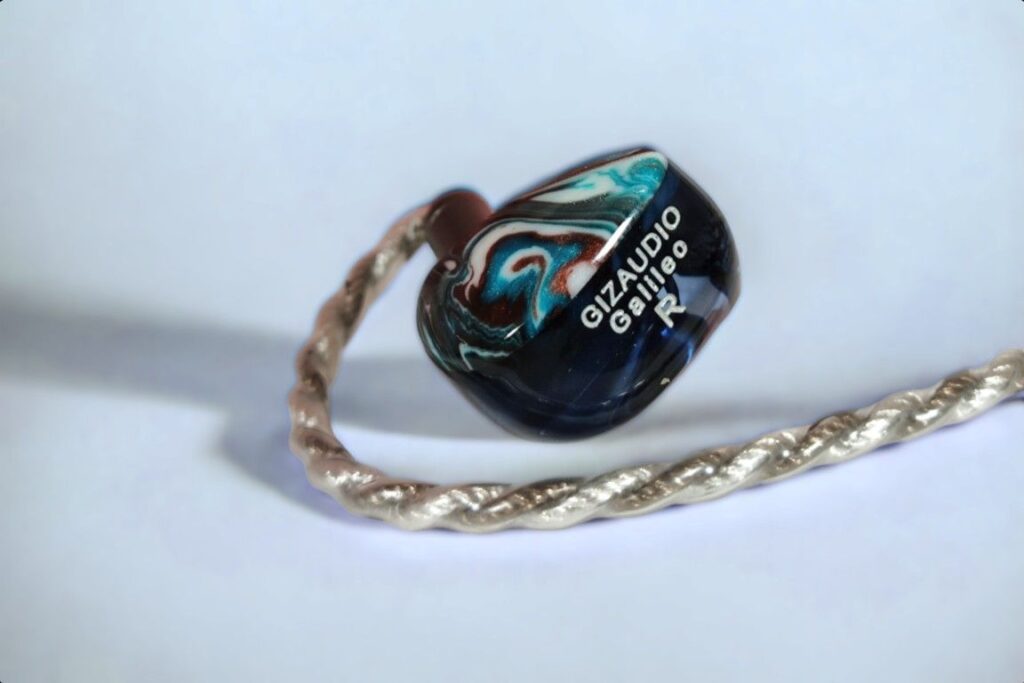
WRAPPING IT UP
Sound Signature
The Galileo is what I’d call a neutral and natural sounding earphone. It does not have strong bass; it’s not very lush and laid-back. It’s not edgy; it’s not too bright.
Treble
The treble is wonderfully detailed and nuanced. It has a good amount of presence, but it’s not too bright. It’s just right and natural-sounding.
Midrange
The midrange is well articulated and very clear. It is not recessed in any way and really brings out the instruments and vocals in a very natural-sounding manner. In a world dominated by V-shaped IEMs, the Galileo is a fresh breath of “natural neutrality.”
Bass
As with the treble and the midrange, the bass is very well-balanced. The Galileo is not bass light, it is not bass heavy, it is not bloomy, and it is not super-tight. It has great definition and goes deep without any artifacts. To me, it sounds very right and natural.
Soundstage and Imaging
The sound stage is reasonably wide and open, with a good sense of depth. Imaging is very good. Instruments are positioned quite precisely in space, and separation between them and layering is very good.
Detail, Dynamics and Timbre
I perceive the Galileo as having a huge amount of detail across the frequency range, and I am especially impressed by the treble. It is ultra-clean, and for the price, I think it is stellar. Midrange detail is also very good, and the bass has good definition and texture while still retaining a nice level of roundedness.

CONCLUSION
The Letshuoer x Gizaudio Galileo is an excellently tuned, well-balanced IEM. It sounds natural and effortless across the frequency spectrum. It will not “wow” you with extreme bass performance, neither with über-sparkly treble.
What it gives you instead is a fantastically neutral, natural and organic-sounding audio experience with lots of detail and excellent imaging. In and quite far beyond its price range, the Galileo is one of my absolute favorites. Get one while you can.
Price when reviewed: 109 USD on sale.
- Buy on Amazon: Letshuoer x Gizaudio Galileo
- Buy on Linsoul: Letshuoer x Gizaudio Galileo



